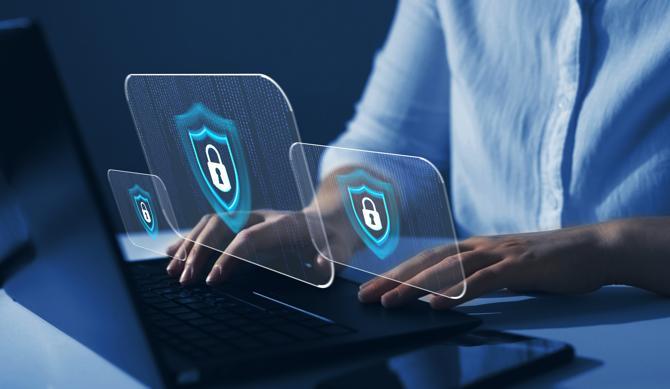Discover How Antivirus Software Safeguards Your Digital World: A Beginner’s Guide
In today’s connected world, antivirus software is a vital part of digital safety. It refers to programs designed to detect, prevent, and remove malicious software—also known as malware—from computers, smartphones, and networks. Antivirus solutions work by scanning files and monitoring behavior to identify threats like viruses, ransomware, spyware, trojans, and worms.
The need for antivirus software emerged in the late 1980s when personal computers became common, and digital threats began to spread. Since then, as the internet has evolved, so have the tactics used by cybercriminals. From phishing scams to data breaches, the landscape is full of digital threats, making antivirus software an essential part of modern life.

Why Antivirus Protection Matters
Digital Threats Are Everywhere
Whether you’re browsing the web, checking emails, downloading files, or using cloud services, your devices are constantly exposed to online threats. Malware can infect systems in seconds and often goes unnoticed until damage is done.
Who Is Affected?
-
Individuals using personal devices
-
Students accessing learning platforms
-
Small businesses with customer data
-
Large corporations managing critical infrastructure
-
Public institutions including hospitals and schools
Problems Antivirus Software Solves
-
Prevents Identity Theft: Protects personal data from hackers.
-
Blocks Ransomware: Stops malicious software from encrypting files and demanding payment.
-
Protects Financial Data: Safeguards online banking and shopping activities.
-
Reduces Downtime: Minimizes system crashes or slowdowns caused by malware.
-
Monitors Suspicious Behavior: Alerts users about unusual system activities.
Recent Trends in Antivirus and Cybersecurity
1. Rise of AI-Powered Threat Detection
Modern antivirus software is now equipped with machine learning and AI to predict and detect new threats in real-time. This is critical in combating polymorphic malware that changes its code to evade detection.
2. Cloud-Based Protection
Instead of relying on local databases, many solutions now use cloud-based scanning to ensure real-time updates and lighter system performance.
3. Increased Threats to Smartphones
According to a 2024 report by AV-Test, Android and iOS devices saw a 28% increase in targeted malware compared to 2023.
4. Growth of Cybercrime-as-a-Service
Hackers are selling malware kits and ransomware tools, making it easier for unskilled attackers to launch campaigns. This trend highlights the importance of automatic, real-time protection.
5. Integration with VPNs and Firewalls
Many antivirus platforms now include Virtual Private Networks (VPNs), password managers, and firewalls in a single suite, offering broader protection.
Laws and Regulations Related to Antivirus and Cybersecurity
Antivirus software and digital safety are influenced by various government and industry regulations:
Global Cybersecurity Regulations
| Region | Regulation Name | Description |
|---|---|---|
| EU | GDPR (General Data Protection Regulation) | Enforces strict data privacy and security measures |
| USA | CCPA (California Consumer Privacy Act) | Grants residents control over their personal information |
| India | DPDP Act (2023) | Focuses on protecting personal data in digital spaces |
| Global | ISO/IEC 27001 | Sets international standards for information security management |
Many countries now require businesses to implement cybersecurity strategies, including the use of antivirus solutions, to avoid heavy penalties in case of a data breach.
Workplace and Education Mandates
-
Schools and universities often use antivirus software as part of safe digital learning environments.
-
Businesses handling customer data are typically required by local data privacy laws to maintain antivirus protection as part of risk management.
Tools and Resources for Antivirus Protection
Here are several tools and resources you can explore to enhance your cybersecurity:
Free Antivirus Software (Basic Protection)
-
Microsoft Defender Antivirus (Windows built-in)
-
Avast Free Antivirus
-
AVG Antivirus Free
-
Bitdefender Antivirus Free
Paid Suites (Advanced Features)
-
Norton 360 (includes VPN, firewall, and parental controls)
-
Kaspersky Premium
-
McAfee Total Protection
-
ESET Smart Security
Online Security Scanners
-
VirusTotal (https://www.virustotal.com) – Scan URLs or files with multiple antivirus engines.
-
Hybrid Analysis – Deep static and behavioral malware analysis.
Browser Extensions
-
Malwarebytes Browser Guard
-
Bitdefender TrafficLight
-
Avast Online Security
Cyber Hygiene Learning Platforms
-
Stay Safe Online (https://staysafeonline.org)
-
Cybrary – Offers free courses on digital safety.
-
Google Safety Center – Tips for account and browsing security.
FAQs on Antivirus Software
1. Do I really need antivirus software if I use a Mac or phone?
Yes. While macOS and mobile devices are less targeted than Windows, they’re not immune. Android devices in particular are frequently targeted by malicious apps, and phishing scams can affect all platforms.
2. Can antivirus software slow down my computer?
Some older or resource-heavy antivirus programs may impact performance, but most modern antivirus software is optimized for speed. Cloud-based and lightweight solutions reduce system load.
3. How often should I scan my device for viruses?
Weekly full scans and real-time protection are ideal. Most antivirus tools allow you to schedule scans automatically.
4. Is free antivirus software enough?
Free tools offer basic protection, but they may lack features like ransomware defense, advanced firewalls, or identity theft protection. For full coverage, consider paid versions.
5. What’s the difference between antivirus and anti-malware?
Antivirus refers broadly to protection against viruses, while anti-malware covers a wider range of threats including spyware, trojans, and ransomware. Most modern antivirus software includes anti-malware features.
Final Thoughts
Antivirus software is no longer optional—it’s a digital necessity. As technology grows more complex, so do cyber threats. Whether you're a casual internet user or running an online business, having a trusted antivirus solution in place can protect your privacy, finances, and peace of mind. Combine antivirus tools with good online habits to create a secure digital environment for yourself and those around you.